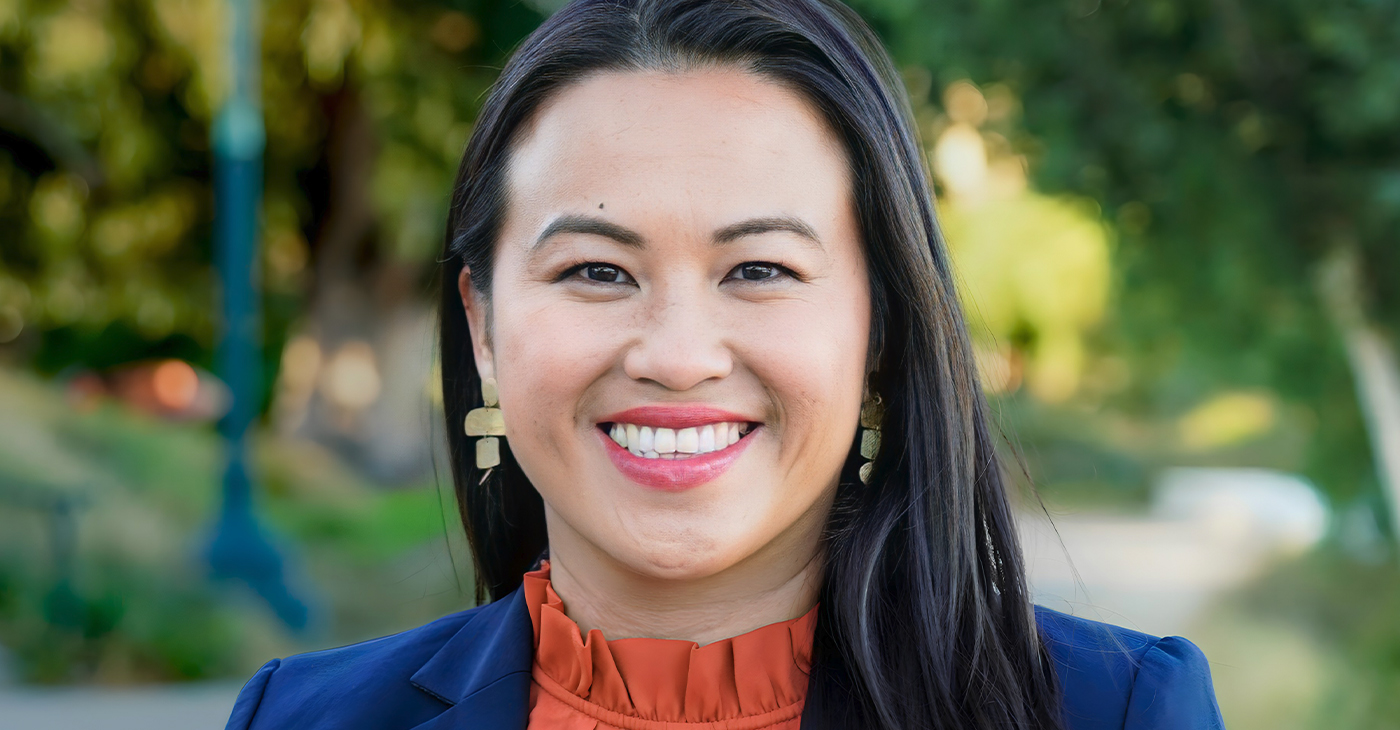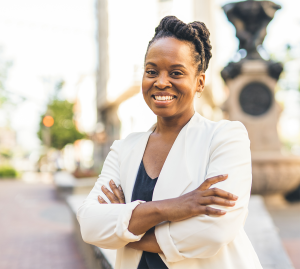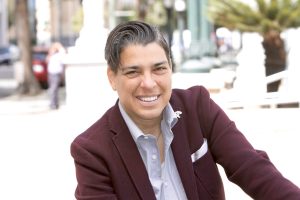Bay Area
Mayor Thao Proposes New Budget that Avoids Layoffs and Protects Oakland City Services
Mayor Sheng Thao this week released her “One Oakland” Fiscal Year (FY) 2023-2025 Proposed Budget. Despite a massive two-year deficit of $360 million, the budget proposal closes the gap and makes needed investments in community priorities while streamlining city government.

The proposal closes a $360 million two-year deficit while investing in affordable housing, infrastructure, and early childhood education.
By Post Staff
Mayor Sheng Thao this week released her “One Oakland” Fiscal Year (FY) 2023-2025 Proposed Budget. Despite a massive two-year deficit of $360 million, the budget proposal closes the gap and makes needed investments in community priorities while streamlining city government.
“We inherited the largest deficit in Oakland’s history, but thanks to the ingenuity and hard work of our City staff, we have found a way to not only close that gap, but actually lay the foundation for Oakland to be stronger in the future,” said Thao.
“We had to make some tough choices in this budget, but in the end, we not only avoided catastrophic closures and cuts, we made real investments in our shared future,” said Thao. “This is a roadmap to weathering this crisis, making us more resilient to future challenges.”
Though the city’s General Purpose Fund faces a large deficit, other revenue sources do not. The proposed budget leverages these funding sources to make significant investments, including:
- The largest investment in affordable housing in Oakland’s history:The proposal allocates over $200 million over two years for affordable housing.
- Expansion of early childhood education:Utilizing federal, state, and local funds would allow for expansion of hours and services at Oakland’s Head Start and Early Head Start program.
- Infrastructure improvements:The budget proposes more than $106 million to build, repair and upgrade parks, recreation facilities, libraries, storm drains, and non-road infrastructure, including $87 million for street repaving.
- Safer streets:More than $9.1million will be directed to calm traffic, improve intersection safety and provide safe routes near schools to help reduce traffic violence and save lives. This includes $3.2 million for bike and pedestrian plans.
- Reimagining public safety:The proposals continue city efforts to ‘civilianize’ certain functions of the Oakland Police Department by moving responsibility for Internal Affairs investigations from OPD to the Community Police Review Agency, allowing police investigators to be transferred to critical community safety units.
- Information technology: The proposal adds $10 million to upgrade and harden cybersecurity protections.

Nikki Fortunato Bas.

Carroll Fife

Rebecca Kaplan.

Kevin Jenkins.
Other changes would consolidate and streamline departments to make government more effective and efficient.
Homelessness services would be merged with the Housing & Community Development Department for improved coordination.
Intergenerational family support programs provided by Parks, Recreation and Youth Development Department and Human Services Department will be combined into a new Department of Children, Youth and Families to provide more seamless services for families.
The Department of Economic & Workforce Development will be merged into the Department of Planning, Building, and Economic Development to provide a streamlined approach to housing production and major project development.
Releasing a press statement Monday, Council President Nikki Fortunato Bas and her budget team, including Councilmembers Carroll Fife, Kevin Jenkins, and Rebecca Kaplan, commended Thao for her plan to achieve a balanced budget while avoiding layoffs, maintaining critical services, and making record investments in affordable housing.
“We are very pleased to see the largest investment in affordable housing in Oakland’s history — $200 million over two years,” said Council President Bas. “Affordable housing is Oakland residents’ top priority, and we will finally make progress creating housing that’s accessible to very low-income and working families.”
“Oaklanders want results, and the proposed reorganization is a smart strategy to cut the bureaucracy and make government deliver,” said Fife. “I’ve called for the integration of Oakland’s housing and homelessness programs, together with my colleagues. (These changes) will help us focus on actually housing our unsheltered neighbors.”
“The mayor’s budget builds on the foundation the Council put in place to create a holistic community safety system,” said Councilmember and Public Safety Chair Rebecca Kaplan.
“This plan advances the work that I initiated with our community by expanding alternative crisis response through the Fire Department’s MACRO program,” Kaplan said. “It also continues critical violence prevention programs and civilianizes Internal Affairs investigations so those officers get out onto our streets.”
“Unlike past budget deficits, there are no federal bailouts this time,” said Councilmember and Finance Chair Kevin Jenkins. “I appreciate that the mayor used every possible tool to close the deficit and maintain current City of Oakland employees — from the hiring slowdown announced in March to freezing vacancies and attrition.”
Oakland city workers represented by SEIU Local 1021, IFPTE Local 21, IAFF Local 55, and IBEW Local 1245 have released a joint statement in support of the mayor’s proposal.
“We applaud the mayor for balancing a historic deficit while protecting essential city services, preventing layoffs, and making the largest investment in affordable housing in Oakland’s history, the unions’ statement said.
“While we understand brownouts in fire services are a reality, we hope that as the budget improves, we focus on restoring services for residents,” said firefighter and paramedic Zac Unger, IAFF Local 55 President.
“The decision to balance the budget by freezing some vacant positions instead of laying off city workers is a critical one to protect services for residents,” said lead electrician Michael Patterson, IBEW Local 1245 chief steward.
“Many city workers are currently doing the jobs of two or three people. The mayor’s budget proposal is a major step towards addressing the understaffing crisis so that we can deliver better services to residents,” said recreation center director Angelica Lopez, chapter treasurer of SEIU Local 1021. “As we move forward with the budget process, ensuring that there are no service cuts for residents and no impact on filled positions must be major priorities for all of us.”
The City Council held a special meeting May 3 where Mayor Thao presented her budget proposal. Councilmembers will host Community Budget Forums between May 17 and June 5. On June 14 at 4:00 p.m., City Council will hold a special meeting to hear the Council President’s Budget Amendments and any additional amendments from Councilmembers.
The City Council must approve a balanced budget by June 30.
Activism
Asm. Corey Jackson Proposes Safe Parking for Homeless College Students Sleeping in Cars
Assemblymember Corey Jackson (D-Moreno Valley), a member of the California Legislative Black Caucus (CLBC), is the author of AB 90, which would require community colleges and California State University campuses to create overnight parking programs where students can sleep safely in their vehicles. With one in four community college students in California experiencing homelessness in the past year, Jackson says the state must act urgently.

By Bo Tefu
California Black Media
As California’s housing crisis continues to impact students, new legislation, Assembly Bill (AB) 90, promises to allow college students without stable housing to sleep in their cars on campus, offering a stark but practical solution aimed at immediate relief.
Assemblymember Corey Jackson (D-Moreno Valley), a member of the California Legislative Black Caucus (CLBC), is the author of AB 90, which would require community colleges and California State University campuses to create overnight parking programs where students can sleep safely in their vehicles. With one in four community college students in California experiencing homelessness in the past year, Jackson says the state must act urgently.
“This just deals with the harsh realities that we find ourselves in,” he said at a recent hearing.
The bill passed its first committee vote and is gaining attention as housing affordability remains a top concern across the state. California rents are more than 30% above the national average, and long waitlists for student housing have left thousands in limbo. CSU reported more than 4,000 students on its housing waitlist last year.
Supporters stress that the bill is not a long-term solution, but a humane step toward helping students who have no other place to go. A successful pilot program at Long Beach City College has already shown that safe, supervised overnight parking can work, giving students access to restrooms, Wi-Fi, and a secure environment.
However, the CSU and community college systems oppose the bill, citing funding concerns. Critics also worry about safety and oversight. But Jackson and student advocates argue the crisis demands bold action.
“If we know students are already sleeping in their cars, why not help them do it safely?” said Ivan Hernandez, president of the Student Senate for California Community Colleges.
Activism
Faces Around the Bay: Author Karen Lewis Took the ‘Detour to Straight Street’
“My life has been a roller-coaster with an unlimited ride wristband! I was raised in Berkeley during the time of Ron Dellums, the Black Panthers, and People’s Park. I was a Hippie kid, my Auntie cut off all our hair so we could wear the natural styles like her and Angela Davis.

By Barbara Fluhrer
I met Karen Lewis on a park bench in Berkeley. She wrote her story on the spot.
“My life has been a roller-coaster with an unlimited ride wristband! I was raised in Berkeley during the time of Ron Dellums, the Black Panthers, and People’s Park. I was a Hippie kid, my Auntie cut off all our hair so we could wear the natural styles like her and Angela Davis.
I got married young, then ended up getting divorced, raising two boys into men. After my divorce, I had a stroke that left me blind and paralyzed. I was homeless, lost in a fog with blurred vision.
Jesus healed me! I now have two beautiful grandkids. At 61, this age and this stage, I am finally free indeed. Our Lord Jesus Christ saved my soul. I now know how to be still. I lay at his feet. I surrender and just rest. My life and every step on my path have already been ordered. So, I have learned in this life…it’s nice to be nice. No stressing, just blessings. Pray for the best and deal with the rest.
Nobody is perfect, so forgive quickly and love easily!”
Lewis’ book “Detour to Straight Street” is available on Amazon.
Activism
Barbara Lee Accepts Victory With “Responsibility, Humility and Love”
“I accept your choice with a deep sense of responsibility, humility, and love. Oakland is a deeply divided City,” Lee said in an April 19 statement. “I answered the call to run to unite our community, so that I can represent every voter, and we can all work together as One Oakland to solve our most pressing problems.”

By Antonio Ray Harvey,
California Black Media
As a candidate for mayor, former U.S. Representative Barbara Lee released a “10-point plan” last week to reassure residents that she will tackle Oakland’s most pressing challenges.
Now that she has edged out her competitors in the ranked-choice special election with 50% or more of the vote, the former Congresswoman, who represented parts of the Bay Area in the U.S. House of Representatives, can put her vision in motion as the city’s first Black woman mayor.
“I accept your choice with a deep sense of responsibility, humility, and love. Oakland is a deeply divided City,” Lee said in an April 19 statement. “I answered the call to run to unite our community, so that I can represent every voter, and we can all work together as One Oakland to solve our most pressing problems.”
On Saturday evening, Taylor conceded to Lee. There are still about 300 Vote-by-Mail ballots left to be verified, according to county election officials. The ballots will be processed on April 21 and April 22.
“This morning, I called Congresswoman Barbara Lee to congratulate her on becoming the next Mayor of Oakland,” Taylor said in a statement.
“I pray that Mayor-Elect Lee fulfills her commitment to unify Oakland by authentically engaging the 47% of Oaklanders who voted for me and who want pragmatic, results-driven leadership.”
The influential Oakland Post endorsed Lee’s campaign, commending her leadership on the local, state, and federal levels.
Paul Cobb, The Post’s publisher, told California Black Media that Lee will bring back “respect and accountability” to the mayor’s office.
“She is going to be a collegial leader drawing on the advice of community nonprofit organizations and those who have experience in dealing with various issues,” Cobb said. “She’s going to try to do a consensus-building thing among those who know the present problems that face the city.”
Born in El Paso, Texas, Lee’s family moved to California while she was in high school. At 20 years old, Lee divorced her husband after the birth of her first child. After the split, Lee went through a tough period, becoming homeless and having to apply for public assistance to make ends meet.
But destitution did not deter the young woman.
Lee groomed herself to become an activist and advocate in Oakland and committed to standing up for the most vulnerable citizens in her community.
Lee traveled to Washington, D.C. to work for then U.S. Congressman Ron Dellums after receiving a Bachelor of Arts degree from Mills College in Oakland in 1973. Lee later won a U.S. Department of Housing and Urban Development (HUD) fellowship to attend the School of Social Welfare, and she earned a Master of Social Work from the University of California-Berkeley in 1975.
Lee later served in the California State Assembly and State Senate before she was elected to Congress in 1998.
After serving in the U.S. Congress for more than 25 years, Lee ran unsuccessfully for California’s U.S. Senate in the 2024 primary election.
Lee joins current Los Angeles mayor Karen Bass and former San Francisco Mayor London Breed as Black women serving as chief executives of major cities in California over the last few years.
-

 Activism4 weeks ago
Activism4 weeks agoOakland Post Endorses Barbara Lee
-

 Activism3 weeks ago
Activism3 weeks agoOakland Post: Week of April 2 – 8, 2025
-

 #NNPA BlackPress3 weeks ago
#NNPA BlackPress3 weeks agoTrump Profits, Black America Pays the Price
-

 Activism2 weeks ago
Activism2 weeks agoOakland Post: Week of April 9 – 15, 2025
-

 #NNPA BlackPress3 weeks ago
#NNPA BlackPress3 weeks agoHarriet Tubman Scrubbed; DEI Dismantled
-

 #NNPA BlackPress3 weeks ago
#NNPA BlackPress3 weeks agoTrump Targets a Slavery Removal from the National Museum of African-American History and Culture
-

 #NNPA BlackPress3 weeks ago
#NNPA BlackPress3 weeks agoLawmakers Greenlight Reparations Study for Descendants of Enslaved Marylanders
-

 #NNPA BlackPress3 weeks ago
#NNPA BlackPress3 weeks agoNew York Stands Firm Against Trump Administration’s Order to Abandon Diversity in Schools





















































